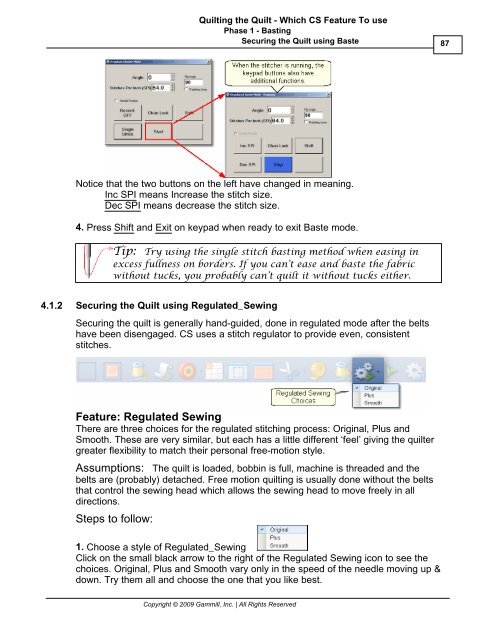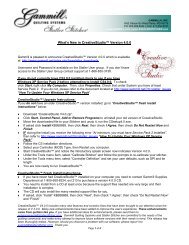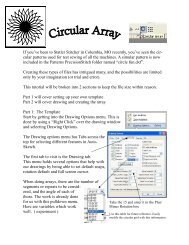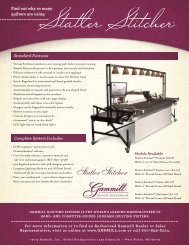You also want an ePaper? Increase the reach of your titles
YUMPU automatically turns print PDFs into web optimized ePapers that Google loves.
Quilting the Quilt - Which CS Feature To use<br />
Phase 1 - Basting<br />
Securing the Quilt using Baste<br />
Notice that the two buttons on the left have changed in meaning.<br />
Inc SPI means Increase the stitch size.<br />
Dec SPI means decrease the stitch size.<br />
4. Press Shift and Exit on keypad when ready to exit Baste mode.<br />
Tip: Try using the single stitch basting method when easing in<br />
excess fullness on borders. If you can’t ease and baste the fabric<br />
without tucks, you probably can’t quilt it without tucks either.<br />
4.1.2 Securing the Quilt using Regulated_Sewing<br />
Securing the quilt is generally hand-guided, done in regulated mode after the belts<br />
have been disengaged. CS uses a stitch regulator to provide even, consistent<br />
stitches.<br />
Feature: Regulated Sewing<br />
There are three choices for the regulated stitching process: Original, Plus and<br />
Smooth. These are very similar, but each has a little different ‘feel’ giving the quilter<br />
greater flexibility to match their personal free-motion style.<br />
Assumptions: The quilt is loaded, bobbin is full, machine is threaded and the<br />
belts are (probably) detached. Free motion quilting is usually done without the belts<br />
that control the sewing head which allows the sewing head to move freely in all<br />
directions.<br />
Steps to follow:<br />
1. Choose a style of Regulated_Sewing<br />
Click on the small black arrow to the right of the Regulated Sewing icon to see the<br />
choices. Original, Plus and Smooth vary only in the speed of the needle moving up &<br />
down. Try them all and choose the one that you like best.<br />
Copyright © 2009 <strong>Gammill</strong>, Inc. | All Rights Reserved<br />
87





